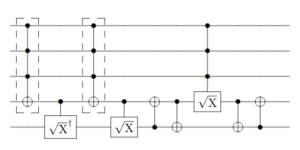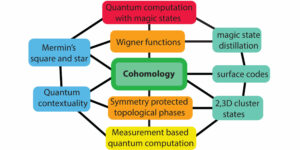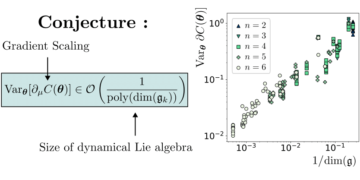1University of Vienna, Faculty of Physics, Vienna Center for Quantum Science and Technology (VCQ), Vienna, Austria
2Departamento de Física, Universidade Federal de Santa Catarina, Florianópolis, Santa Catarina 88040-900, Brazil
3Laboratoire Kastler Brossel, Sorbonne Université, CNRS, ENS-Université PSL, Collège de France, Paris 75005, France.
4Christian Doppler Laboratory for Photonic Quantum Computer, Faculty of Physics, University of Vienna, 1090 Vienna, Austria
Find this paper interesting or want to discuss? Scite or leave a comment on SciRate.
Abstract
Maxwell’s Demon is at the heart of the interrelation between quantum information processing and thermodynamics. In this thought experiment, a demon generates a temperature gradient between two thermal baths initially at equilibrium by gaining information at the single-particle level and applying classical feed-forward operations, allowing for the extraction of work. Here we implement a photonic version of Maxwell’s Demon with active feed-forward in a fibre-based system using ultrafast optical switches. We experimentally show that, if correlations exist between the two thermal baths, the Demon can generate a temperature difference over an order of magnitude larger than without correlations, and so extract more work. Our work demonstrates the great potential of photonic experiments – which provide a unique degree of control on the system – to access new regimes in quantum thermodynamics.
Popular summary
In our work, we empowered the Demon enabling it to generate a larger temperature imbalance per measurement, thus maximising the extractable work. Information theory shows that this may be done by providing the Demon with extra information. In our work, the source of the additional information is correlations between particles in the box. For example, imagine that for every fast particle on the right side of the box there is a corresponding fast particle moving on the left side moving in the same direction. In this case, measuring a particle on one side of the box also yields information about another particle on the other side of the box, making it easier to sort them.
Correlations are hard to engineer in most systems, like the gas particles in a box considered by Maxwell, but they are readily obtained in photonics, in which feed-forward operations are also possible. In our photonics experiment, we created a variety of thermal states of photons (which are the photonic analogue to thermally distributed gas particles), with and without correlations. The photonic Maxwell’s Demon creates a photon-number difference at the output (in analogy with the temperature imbalance of Maxwell’s thought experiment), i.e. an energy imbalance that could then be used to extract work, for example via radiation pressure. We showed that the photon number imbalance obtained with correlated states was ten times larger than the best imbalance obtained without correlations and could show that this is indeed linked to the information obtained by the Demon.
Our work shows that photonic experiments, with their high degree of flexibility and control, provide a new testing ground to realise and study quantum thermodynamics scenarios.
► BibTeX data
► References
[1] J. Clerk. Maxwell. Theory of heat. Longman, 1871.
[2] R. Landauer. Irreversibility and heat generation in the computing process. IBM Journal of Research and Development, 5 (3): 183–191, 1961. 10.1147/rd.53.0183.
https://doi.org/10.1147/rd.53.0183
[3] Lidia del Rio, Lea Kraemer, and Renato Renner. Resource theories of knowledge. arXiv:1511.08818 [cond-mat, physics:math-ph, physics:quant-ph], November 2015. 10.48550/arXiv.1511.08818.
https://doi.org/10.48550/arXiv.1511.08818
arXiv:1511.08818
[4] John Goold, Marcus Huber, Arnau Riera, Lídia del Rio, and Paul Skrzypczyk. The role of quantum information in thermodynamics—a topical review. Journal of Physics A: Mathematical and Theoretical, 49 (14): 143001, April 2016. 10.1088/1751-8113/49/14/143001.
https://doi.org/10.1088/1751-8113/49/14/143001
[5] Jonathan Oppenheim, Michał Horodecki, Paweł Horodecki, and Ryszard Horodecki. Thermodynamical approach to quantifying quantum correlations. Phys. Rev. Lett., 89: 180402, Oct 2002. 10.1103/PhysRevLett.89.180402.
https://doi.org/10.1103/PhysRevLett.89.180402
[6] Wojciech Hubert Zurek. Quantum discord and maxwell’s demons. Phys. Rev. A, 67: 012320, Jan 2003. 10.1103/PhysRevA.67.012320.
https://doi.org/10.1103/PhysRevA.67.012320
[7] Koji Maruyama, Fumiaki Morikoshi, and Vlatko Vedral. Thermodynamical detection of entanglement by maxwell’s demons. Phys. Rev. A, 71: 012108, Jan 2005. 10.1103/PhysRevA.71.012108.
https://doi.org/10.1103/PhysRevA.71.012108
[8] William Thomson. Kinetic theory of the dissipation of energy. Nature, 9 (232): 441–444, Apr 1874. 10.1038/009441c0.
https://doi.org/10.1038/009441c0
[9] Harvey S. Leff and Andrew F. Rex, editors. Maxwell’s Demon: Entropy, Information, Computing. Princeton University Press, 1990.
[10] M. B. Plenio and V. Vitelli. The physics of forgetting: Landauer’s erasure principle and information theory. Contemporary Physics, 42 (1): 25–60, January 2001. 10.1080/00107510010018916.
https://doi.org/10.1080/00107510010018916
[11] Koji Maruyama, Franco Nori, and Vlatko Vedral. Colloquium: The physics of Maxwell’s demon and information. Reviews of Modern Physics, 81 (1): 1–23, January 2009. 10.1103/RevModPhys.81.1.
https://doi.org/10.1103/RevModPhys.81.1
[12] Juan M. R. Parrondo, Jordan M. Horowitz, and Takahiro Sagawa. Thermodynamics of information. Nature Physics, 11 (2): 131–139, February 2015. 10.1038/nphys3230.
https://doi.org/10.1038/nphys3230
[13] Andrew Rex. Maxwell’s Demon—A Historical Review. Entropy, 19 (6): 240, June 2017. 10.3390/e19060240.
https://doi.org/10.3390/e19060240
[14] Konstantin Beyer, Kimmo Luoma, and Walter T. Strunz. Steering Heat Engines: A Truly Quantum Maxwell Demon. Physical Review Letters, 123 (25): 250606, December 2019. 10.1103/PhysRevLett.123.250606.
https://doi.org/10.1103/PhysRevLett.123.250606
[15] Meng-Jun Hu, Xiao-Min Hu, and Yong-Sheng Zhang. Maxwell Demon and Quantum Non-locality. arXiv:2105.05656 [quant-ph], May 2021. 10.48550/arXiv.2105.05656.
https://doi.org/10.48550/arXiv.2105.05656
arXiv:2105.05656
[16] L. Szilard. über die entropieverminderung in einem thermodynamischen system bei eingriffen intelligenter wesen. Zeitschrift für Physik, 53 (11): 840–856, Nov 1929. 10.1007/BF01341281.
https://doi.org/10.1007/BF01341281
[17] Charles H. Bennett. The thermodynamics of computation—a review. International Journal of Theoretical Physics, 21 (12): 905–940, December 1982. 10.1007/BF02084158.
https://doi.org/10.1007/BF02084158
[18] Shoichi Toyabe, Takahiro Sagawa, Masahito Ueda, Eiro Muneyuki, and Masaki Sano. Experimental demonstration of information-to-energy conversion and validation of the generalized jarzynski equality. Nature Physics, 6 (12): 988–992, Dec 2010. 10.1038/nphys1821.
https://doi.org/10.1038/nphys1821
[19] Antoine Bérut, Artak Arakelyan, Artyom Petrosyan, Sergio Ciliberto, Raoul Dillenschneider, and Eric Lutz. Experimental verification of landauer’s principle linking information and thermodynamics. Nature, 483 (7388): 187–189, Mar 2012. 10.1038/nature10872.
https://doi.org/10.1038/nature10872
[20] J. V. Koski, V. F. Maisi, T. Sagawa, and J. P. Pekola. Experimental observation of the role of mutual information in the nonequilibrium dynamics of a maxwell demon. Phys. Rev. Lett., 113: 030601, Jul 2014. 10.1103/PhysRevLett.113.030601.
https://doi.org/10.1103/PhysRevLett.113.030601
[21] Maxime Debiossac, David Grass, Jose Joaquin Alonso, Eric Lutz, and Nikolai Kiesel. Thermodynamics of continuous non-markovian feedback control. Nature Communications, 11 (1): 1360, Mar 2020. 10.1038/s41467-020-15148-5.
https://doi.org/10.1038/s41467-020-15148-5
[22] Stella Seah, Stefan Nimmrichter, and Valerio Scarani. Maxwell’s lesser demon: A quantum engine driven by pointer measurements. Phys. Rev. Lett., 124: 100603, Mar 2020. 10.1103/PhysRevLett.124.100603.
https://doi.org/10.1103/PhysRevLett.124.100603
[23] Tamir Admon, Saar Rahav, and Yael Roichman. Experimental realization of an information machine with tunable temporal correlations. Phys. Rev. Lett., 121: 180601, Nov 2018. 10.1103/PhysRevLett.121.180601.
https://doi.org/10.1103/PhysRevLett.121.180601
[24] Baldo-Luis Najera-Santos, Patrice A. Camati, Valentin Métillon, Michel Brune, Jean-Michel Raimond, Alexia Auffèves, and Igor Dotsenko. Autonomous maxwell’s demon in a cavity qed system. Phys. Rev. Research, 2: 032025, Jul 2020. 10.1103/PhysRevResearch.2.032025.
https://doi.org/10.1103/PhysRevResearch.2.032025
[25] Aishwarya Kumar, Tsung-Yao Wu, Felipe Giraldo, and David S. Weiss. Sorting ultracold atoms in a three-dimensional optical lattice in a realization of maxwell’s demon. Nature, 561 (7721): 83–87, Sep 2018. 10.1038/s41586-018-0458-7.
https://doi.org/10.1038/s41586-018-0458-7
[26] Nathanaël Cottet, Sébastien Jezouin, Landry Bretheau, Philippe Campagne-Ibarcq, Quentin Ficheux, Janet Anders, Alexia Auffèves, Rémi Azouit, Pierre Rouchon, and Benjamin Huard. Observing a quantum maxwell demon at work. Proceedings of the National Academy of Sciences, 114 (29): 7561–7564, 2017. 10.1073/pnas.1704827114.
https://doi.org/10.1073/pnas.1704827114
[27] W.-B. Wang, X.-Y. Chang, F. Wang, P.-Y. Hou, Y.-Y. Huang, W.-G. Zhang, X.-L. Ouyang, X.-Z. Huang, Z.-Y. Zhang, H.-Y. Wang, L. He, and L.-M. Duan. Realization of quantum maxwell’s demon with solid-state spins $ast$. Chinese Physics Letters, 35 (4): 040301, apr 2018. 10.1088/0256-307x/35/4/040301.
https://doi.org/10.1088/0256-307x/35/4/040301
[28] Y. Masuyama, K. Funo, Y. Murashita, A. Noguchi, S. Kono, Y. Tabuchi, R. Yamazaki, M. Ueda, and Y. Nakamura. Information-to-work conversion by maxwell’s demon in a superconducting circuit quantum electrodynamical system. Nature Communications, 9 (1): 1291, Mar 2018. 10.1038/s41467-018-03686-y.
https://doi.org/10.1038/s41467-018-03686-y
[29] G Engelhardt and G Schaller. Maxwell’s demon in the quantum-zeno regime and beyond. New Journal of Physics, 20 (2): 023011, feb 2018. 10.1088/1367-2630/aaa38d.
https://doi.org/10.1088/1367-2630/aaa38d
[30] Takahiro Sagawa and Masahito Ueda. Second law of thermodynamics with discrete quantum feedback control. Phys. Rev. Lett., 100: 080403, Feb 2008. 10.1103/PhysRevLett.100.080403.
https://doi.org/10.1103/PhysRevLett.100.080403
[31] Angeline Shu, Jibo Dai, and Valerio Scarani. Power of an optical maxwell’s demon in the presence of photon-number correlations. Phys. Rev. A, 95: 022123, Feb 2017. 10.1103/PhysRevA.95.022123.
https://doi.org/10.1103/PhysRevA.95.022123
[32] Mihai D. Vidrighin, Oscar Dahlsten, Marco Barbieri, M. S. Kim, Vlatko Vedral, and Ian A. Walmsley. Photonic maxwell’s demon. Phys. Rev. Lett., 116: 050401, Feb 2016. 10.1103/PhysRevLett.116.050401.
https://doi.org/10.1103/PhysRevLett.116.050401
[33] Guilherme Luiz Zanin, Maxime J Jacquet, Michele Spagnolo, Peter Schiansky, Irati Alonso Calafell, Lee A Rozema, and Philip Walther. Fiber-compatible photonic feed-forward with 99% fidelity. Opt. Express, 29 (3): 3425–3437, Feb 2021a. 10.1364/OE.409867.
https://doi.org/10.1364/OE.409867
[34] R. Dorner, S. R. Clark, L. Heaney, R. Fazio, J. Goold, and V. Vedral. Extracting quantum work statistics and fluctuation theorems by single-qubit interferometry. Phys. Rev. Lett., 110: 230601, Jun 2013. 10.1103/PhysRevLett.110.230601.
https://doi.org/10.1103/PhysRevLett.110.230601
[35] Augusto J. Roncaglia, Federico Cerisola, and Juan Pablo Paz. Work measurement as a generalized quantum measurement. Phys. Rev. Lett., 113: 250601, Dec 2014. 10.1103/PhysRevLett.113.250601.
https://doi.org/10.1103/PhysRevLett.113.250601
[36] Tiago B. Batalhão, Alexandre M. Souza, Laura Mazzola, Ruben Auccaise, Roberto S. Sarthour, Ivan S. Oliveira, John Goold, Gabriele De Chiara, Mauro Paternostro, and Roberto M. Serra. Experimental reconstruction of work distribution and study of fluctuation relations in a closed quantum system. Phys. Rev. Lett., 113: 140601, Oct 2014. 10.1103/PhysRevLett.113.140601.
https://doi.org/10.1103/PhysRevLett.113.140601
[37] Shuoming An, Jing-Ning Zhang, Mark Um, Dingshun Lv, Yao Lu, Junhua Zhang, Zhang-Qi Yin, H. T. Quan, and Kihwan Kim. Experimental test of the quantum jarzynski equality with a trapped-ion system. Nature Physics, 11 (2): 193–199, Feb 2015. 10.1038/nphys3197.
https://doi.org/10.1038/nphys3197
[38] J. P. S. Peterson, R. S. Sarthour, A. M. Souza, I. S. Oliveira, J. Goold, K. Modi, D. O. Soares-Pinto, and L. C. Céleri. Experimental demonstration of information to energy conversion in a quantum system at the landauer limit. Proceedings of the Royal Society A: Mathematical, Physical and Engineering Sciences, 472 (2188): 20150813, 2016. 10.1098/rspa.2015.0813.
https://doi.org/10.1098/rspa.2015.0813
[39] Johannes Roßnagel, Samuel T. Dawkins, Karl N. Tolazzi, Obinna Abah, Eric Lutz, Ferdinand Schmidt-Kaler, and Kilian Singer. A single-atom heat engine. Science, 352 (6283): 325–329, 2016. 10.1126/science.aad6320.
https://doi.org/10.1126/science.aad6320
[40] Luca Mancino, Marco Sbroscia, Ilaria Gianani, Emanuele Roccia, and Marco Barbieri. Quantum simulation of single-qubit thermometry using linear optics. Phys. Rev. Lett., 118: 130502, Mar 2017. 10.1103/PhysRevLett.118.130502.
https://doi.org/10.1103/PhysRevLett.118.130502
[41] Zhenxing Zhang, Tenghui Wang, Liang Xiang, Zhilong Jia, Peng Duan, Weizhou Cai, Ze Zhan, Zhiwen Zong, Jianlan Wu, Luyan Sun, and et al. Experimental demonstration of work fluctuations along a shortcut to adiabaticity with a superconducting xmon qubit. New Journal of Physics, 20: 085001, Aug 2018. 10.1088/1367-2630/aad4e7.
https://doi.org/10.1088/1367-2630/aad4e7
[42] T. P. Xiong, L. L. Yan, F. Zhou, K. Rehan, D. F. Liang, L. Chen, W. L. Yang, Z. H. Ma, M. Feng, and V. Vedral. Experimental verification of a jarzynski-related information-theoretic equality by a single trapped ion. Phys. Rev. Lett., 120: 010601, Jan 2018. 10.1103/PhysRevLett.120.010601.
https://doi.org/10.1103/PhysRevLett.120.010601
[43] Chang-Kang Hu, Alan C. Santos, Jin-Ming Cui, Yun-Feng Huang, Diogo O. Soares-Pinto, Marcelo S. Sarandy, Chuan-Feng Li, and Guang-Can Guo. Quantum thermodynamics in adiabatic open systems and its trapped-ion experimental realization. npj Quantum Information, 6 (1): 73, Aug 2020. 10.1038/s41534-020-00300-2.
https://doi.org/10.1038/s41534-020-00300-2
[44] P. H. Souto Ribeiro, T. Häffner, G. L. Zanin, N. Rubiano da Silva, R. Medeiros de Araújo, W. C. Soares, R. J. de Assis, L. C. Céleri, and A. Forbes. Experimental study of the generalized jarzynski fluctuation relation using entangled photons. Phys. Rev. A, 101: 052113, May 2020. 10.1103/PhysRevA.101.052113.
https://doi.org/10.1103/PhysRevA.101.052113
[45] Pieter Kok, Hwang Lee, and Jonathan P. Dowling. Creation of large-photon-number path entanglement conditioned on photodetection. Phys. Rev. A, 65: 052104, Apr 2002a. 10.1103/PhysRevA.65.052104.
https://doi.org/10.1103/PhysRevA.65.052104
[46] R. Loudon. The Quantum Theory of Light. OUP Oxford, 2000. ISBN 9780191589782.
[47] Masahito Ueda, Nobuyuki Imoto, and Tetsuo Ogawa. Quantum theory for continuous photodetection processes. Phys. Rev. A, 41: 3891–3904, Apr 1990. 10.1103/PhysRevA.41.3891.
https://doi.org/10.1103/PhysRevA.41.3891
[48] Yu. I. Bogdanov, K. G. Katamadze, G. V. Avosopiants, L. V. Belinsky, N. A. Bogdanova, A. A. Kalinkin, and S. P. Kulik. Multiphoton subtracted thermal states: Description, preparation, and reconstruction. Phys. Rev. A, 96: 063803, Dec 2017. 10.1103/PhysRevA.96.063803.
https://doi.org/10.1103/PhysRevA.96.063803
[49] K. G. Katamadze, G. V. Avosopiants, Yu. I. Bogdanov, and S. P. Kulik. How quantum is the “quantum vampire” effect?: testing with thermal light. Optica, 5 (6): 723–726, Jun 2018. 10.1364/OPTICA.5.000723.
https://doi.org/10.1364/OPTICA.5.000723
[50] Pieter Kok, Hwang Lee, and Jonathan P. Dowling. Creation of large-photon-number path entanglement conditioned on photodetection. Phys. Rev. A, 65: 052104, Apr 2002b. 10.1103/PhysRevA.65.052104.
https://doi.org/10.1103/PhysRevA.65.052104
[51] Itai Afek, Oron Ambar, and Yaron Silberberg. High-noon states by mixing quantum and classical light. Science, 328 (5980): 879–881, 2010. 10.1126/science.1188172.
https://doi.org/10.1126/science.1188172
[52] Lee A Rozema, James D Bateman, Dylan H Mahler, Ryo Okamoto, Amir Feizpour, Alex Hayat, and Aephraim M Steinberg. Scalable spatial superresolution using entangled photons. Physical review letters, 112 (22): 223602, 2014. 10.1103/PhysRevLett.112.223602.
https://doi.org/10.1103/PhysRevLett.112.223602
[53] MJ Holland and K Burnett. Interferometric detection of optical phase shifts at the heisenberg limit. Physical review letters, 71 (9): 1355, 1993. 10.1103/PhysRevLett.71.1355.
https://doi.org/10.1103/PhysRevLett.71.1355
[54] B. Yurke and M. Potasek. Obtainment of thermal noise from a pure quantum state. Phys. Rev. A, 36: 3464–3466, Oct 1987. 10.1103/PhysRevA.36.3464.
https://doi.org/10.1103/PhysRevA.36.3464
[55] Bibiane Blauensteiner, Isabelle Herbauts, Stefano Bettelli, Andreas Poppe, and Hannes Hübel. Photon bunching in parametric down-conversion with continuous-wave excitation. Phys. Rev. A, 79: 063846, Jun 2009. 10.1103/PhysRevA.79.063846.
https://doi.org/10.1103/PhysRevA.79.063846
[56] Takahiro Sagawa and Masahito Ueda. Generalized Jarzynski Equality under Nonequilibrium Feedback Control. Physical Review Letters, 104 (9): 090602, March 2010. 10.1103/PhysRevLett.104.090602.
https://doi.org/10.1103/PhysRevLett.104.090602
[57] Xiao-Qi Zhou, Timothy C. Ralph, Pruet Kalasuwan, Mian Zhang, Alberto Peruzzo, Benjamin P. Lanyon, and Jeremy L. O’Brien. Adding control to arbitrary unknown quantum operations. Nature Communications, 2 (1): 413, Aug 2011. 10.1038/ncomms1392.
https://doi.org/10.1038/ncomms1392
[58] Guilherme L. Zanin, Michael Antesberger, Maxime J. Jacquet, Paulo H. Souto Ribeiro, Lee A. Rozema, and Philip Walther. Raw data for the manuscript `Enhanced Photonic Maxwell’s Demon with Correlated Baths’, July 2021b. URL https://doi.org/10.5281/zenodo.5113016.
https://doi.org/10.5281/zenodo.5113016
[59] W. Martienssen and E. Spiller. Coherence and fluctuations in light beams. American Journal of Physics, 32 (12): 919–926, 1964. 10.1119/1.1970023.
https://doi.org/10.1119/1.1970023
[60] F. T. Arecchi. Measurement of the statistical distribution of gaussian and laser sources. Phys. Rev. Lett., 15: 912–916, Dec 1965. 10.1103/PhysRevLett.15.912.
https://doi.org/10.1103/PhysRevLett.15.912
[61] F.T. Arecchi, E. Gatti, and A. Sona. Time distribution of photons from coherent and gaussian sources. Physics Letters, 20 (1): 27–29, 1966. 10.1016/0031-9163(66)91034-1.
https://doi.org/10.1016/0031-9163(66)91034-1
[62] R. Hanbury Brown and R. Q. Twiss. Correlation between photons in two coherent beams of light. Nature, 177 (4497): 27–29, Jan 1956. 10.1038/177027a0.
https://doi.org/10.1038/177027a0
[63] R. Q. Tiss, A. G. Little, and R. Hanbury Brown. Correlation between photons, in coherent beams of light, detected by a coincidence counting technique. Nature, 180 (4581): 324–326, Aug 1957. 10.1038/180324a0.
https://doi.org/10.1038/180324a0
[64] Rui-Bo Jin, Ryosuke Shimizu, Kentaro Wakui, Mikio Fujiwara, Taro Yamashita, Shigehito Miki, Hirotaka Terai, Zhen Wang, and Masahide Sasaki. Pulsed sagnac polarization-entangled photon source with a ppktp crystal at telecom wavelength. Opt. Express, 22 (10): 11498–11507, May 2014. 10.1364/OE.22.011498.
https://doi.org/10.1364/OE.22.011498
Cited by
[1] Wentao Ji, Zihua Chai, Mengqi Wang, Yuhang Guo, Xing Rong, Fazhan Shi, Changliang Ren, Ya Wang, and Jiangfeng Du, “Spin Quantum Heat Engine Quantified by Quantum Steering”, Physical Review Letters 128 9, 090602 (2022).
[2] P. Malgaretti and H. Stark, “Szilard engines and information-based work extraction for active systems”, arXiv:2203.13075.
The above citations are from SAO/NASA ADS (last updated successfully 2022-09-21 22:02:38). The list may be incomplete as not all publishers provide suitable and complete citation data.
On Crossref’s cited-by service no data on citing works was found (last attempt 2022-09-21 22:02:36).
This Paper is published in Quantum under the Creative Commons Attribution 4.0 International (CC BY 4.0) license. Copyright remains with the original copyright holders such as the authors or their institutions.











